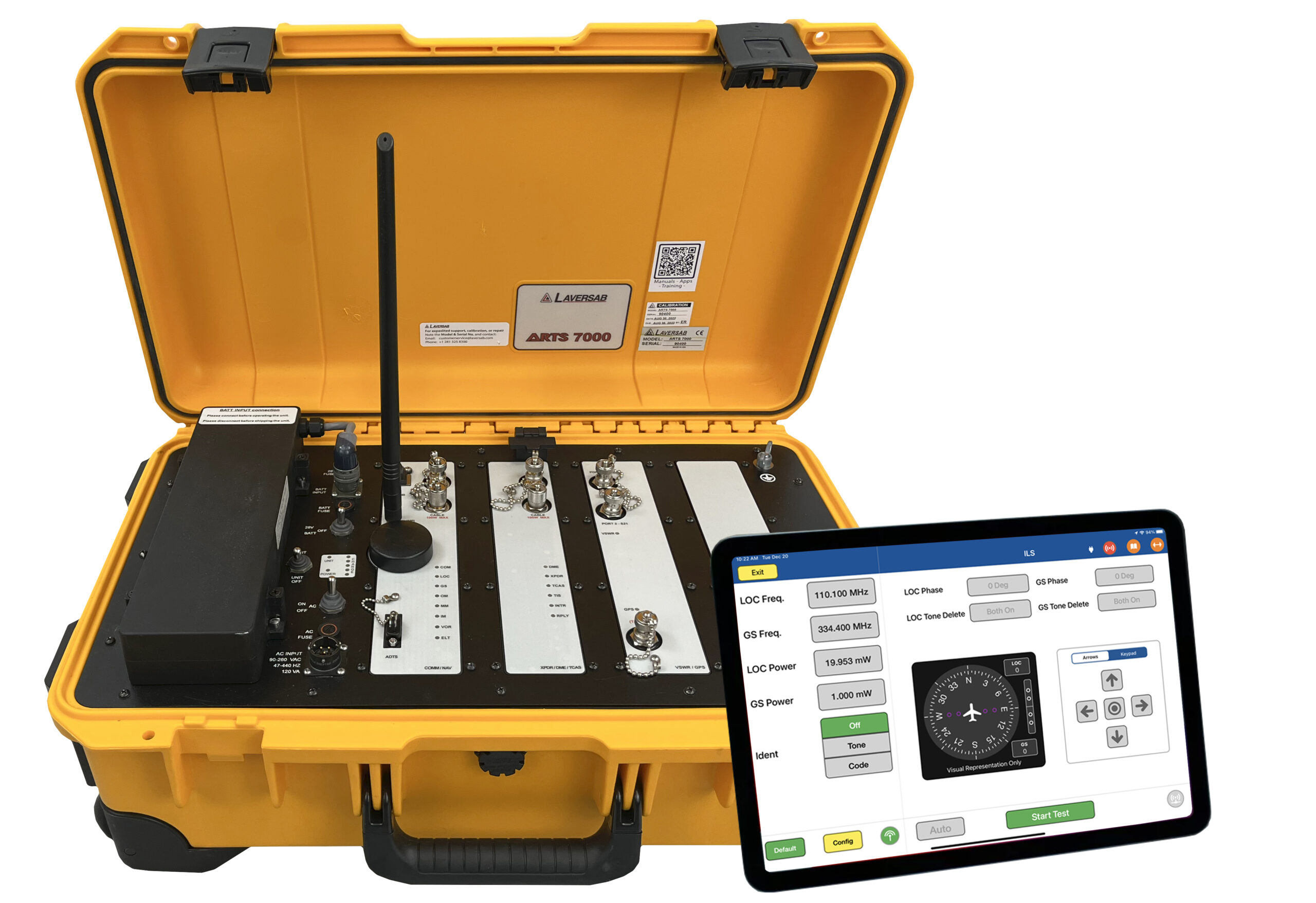Using NAV/COMM for Navigation and Communication
NAV/COMM equipment is so named because it combines a navigation receiver and communication transceiver in one unit. This dual-function unit provides several advantages over a separate NAV receiver and COMM transceiver: they are less expensive, easier to install, require less panel space, and offer additional operating convenience. In short, aircraft personnel can rest assured that NAV/COMM flight line test sets will help them fly safely until they reach their final destination.
Laversab Aviation offers a variety of innovative testing solutions that ensure safe flying conditions, including a multifunctional all-in-one product known as the Laversab Avionics Radio Test System (ARTS) 7000. One of the key attributes of the ARTS-7000 is that it is designed to meet all aircraft radio test requirements in a single unit. Standard tests include radio communication, navigation, distance measuring equipment (DME), Mode S, automatic dependent surveillance – broadcast (ADS-B), and emergency location transmitters (ELTs). Optional tests include user acceptance testing (UAT) and traffic collision avoidance system (TCAS).
Whether from inside the cockpit or around the aircraft, the ARTS-7000 can be controlled wirelessly via a simple yet intuitive touch-screen interface. In addition, the unit is built to reduce upfront costs, simplify aircraft testing, and cover current and future avionics radio test requirements. Read on to learn more about how NAV/COMM test sets should operate!
NAV/COMM Test Sets
The capabilities of the ARTS-7000 unit are defined by the modules that are fitted to the test set. There are three standard NAV/COMM test set configurations: NAV/COMM only, pulse only, or NAV/COMM and pulse together. For the purposes of this post, the focus will be on the capabilities of the ARTS-700 when configured with only NAV/COMM capabilities. These capabilities include the following:
- Communications – VHF band
- Communications – UHF band
- Communications – HF band
- Communication – SelCal
- Navigation – Instrument Landing System (ILS)
- Navigation – Marker Beacon (Mkr)
- Navigation – VHF Omnidirectional Ranging (VOR)
- Emergency Location Transmitter (ELT)
In scenarios where testing over the air is performed (i.e., the ARTS-7000 pulse antenna to the aircraft under test antenna), connect the telescopic antenna for all NAV/COMM functions directly to the antenna port on the top NAV/COMM module. Extend this antenna to its fullest length. If a remote antenna is required. select a suitable coaxial cable. Connect one end of the cable to the antenna port on the top of the NAV/COMM module and connect the other end to the antenna tripod adapter. Connect the adapter to the tripod, attach the NAV/COMM telescoping antenna to the adapter, and position the tripod/antenna.
Finally, the ARTS-700 features an antenna connection with a 1W maximum that can be used to connect for over-the-air (OTA) testing. OTA testing is a method of predicting the performance and reliability of a wireless device under real-world conditions. The device is placed in a free space environment and subjected to different test conditions to ensure that it performs as expected.
For more information on how to operate a NAV/COMM test set, contact Laversab Aviation today!
-
Avionics Radio Test Set: ARTS-7000
The Laversab ARTS-7000 is a multifunction all-in-one Avionics Radio Test System – ARTS. It is designed to meet all aircraft radio test requirements in a single unit. The ARTS-7000 is controlled wirelessly – whether from inside the cockpit or around the aircraft. It is controlled via a simple yet intuitive touch-screen interface. The ARTS-7000 is built to reduce upfront costs, simplify aircraft testing, and cover both current & future radio test requirements.
Standard tests: Radio Communication, Navigation, Distance Measuring Equipment, Mode S, ADSB, Emergency Location Transmitters
Optional tests: TCAS, UAT, GPS
The ARTS-7000 is user configurable and expandable to meet future avionics requirements. It is built to test any airborne platform, including General aviation, Commercial airliners, helicopters, and military applications.
